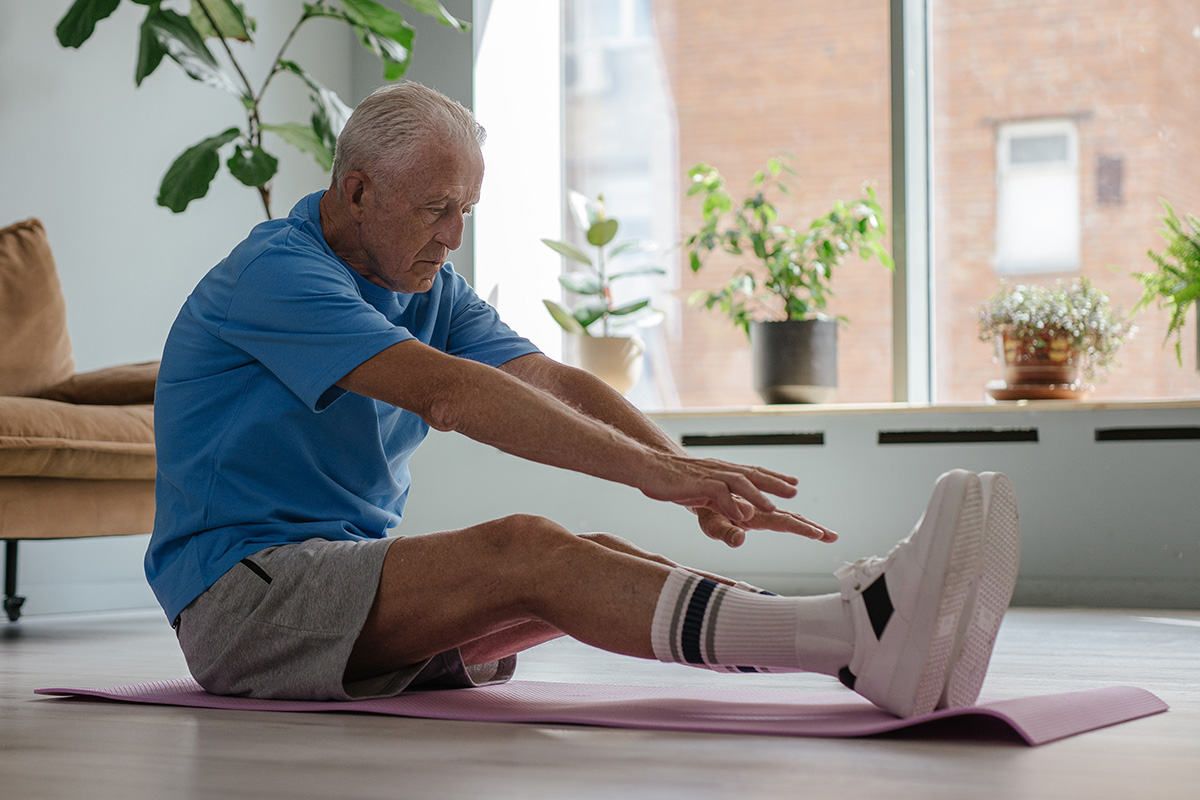Tips for Managing Parkinson’s
A Parkinson’s diagnosis can be absolutely life altering, but it doesn’t mean that your life is over. People with Parkinson’s have many reasons to be hopeful with new research, better education and effective techniques to help you stay in charge of your future.
If you’re dealing with the effects of a Parkinson’s diagnosis, there are ways to preserve your physical function, ease your symptoms and enhance your quality of life by learning as much as you can about the disease; exploring treatment options; reducing your stress levels; exercising regularly; and establishing a healthy sleep pattern and diet.
During the lead up to World Parkinson’s Day on April 11th, we want to help spread awareness about the disease and the things you can implement into your daily routines to help you to live the most comfortable and joyful life possible.
What Aggravates Parkinson’s Disease?
It’s understandable that a diagnosis like Parkinson’s can cause a lot of stress and emotional strain on top of any physical manifestations you may already be experiencing. Unfortunately, you may find that this externally fueled stress aggravates your symptoms. Any tremors, slowness, stiffness, or imbalance may be exacerbated during times of high stress.
In addition to this, people with Parkinson’s disease often experience an internally fueled form of anxiety which is caused by a chemical imbalance in the brain. Anxiety is a non-motor symptom that is very often associated with Parkinson’s disease and can also be accompanied by depression.
Stress and anxiety are often indistinguishable in their symptoms. Both may cause excessive worry, poor sleeping habits, and lack of attention span, as well as physical symptoms such as a rapid heart rate, trouble breathing, sweating, and headaches.
How can I Improve My Quality of Life With Parkinson’s?
The best thing you can do if you receive a Parkinson’s diagnosis is to seek professional help and support as soon as possible. Education and support will be your biggest asset while dealing with the challenges you face, and taking early action will increase your ability to understand and deal with the many effects of the disease.
Reach out to your doctor or other medical professionals to help you formulate a treatment plan that best suits you. In the meantime, you can also:
- Research as much as you can about the condition, treatments, and support mechanisms.
- Talk to family and friends and seek support from the people that love you.
- Identify your support network and make use of local resources.
- Continue to do the things that you enjoy.
How can you Slow the Progression of Parkinson’s Disease?
Reduce stress and anxiety
Unless you’re someone who thrives off the thrill of a demanding lifestyle, everyone wants to reduce their stress levels and this is all the more important for a person living with Parkinson’s. There are many effective medications that can aid in reducing your anxiety and stress levels, though these should be used in conjunction with a complete treatment plan to manage any unwanted side effects. There are also effective lifestyle modifications you can implement to decrease your stress and anxiety:
- Planning enough time to accomplish any tasks
- Creating a relaxing environment in the space you spend the most time.
- Socialising with positive people
- Getting involved in worthy causes
- Joining a support group
- Healthy food and sleep
- Regular exercise
- Meditation
Anticipate imbalance
Parkinson’s disease can affect your ability to balance and might cause you to lose your footing. Be smart when moving around and protect yourself with some basic self-preservation precautions:
- Learn to take things slowly.
- Change direction with a u-turn rather than a pivot.
- Keep your posture as straight as possible and look straight ahead instead of at the ground.
- Retrain yourself to plant your heels first when you take a step.
- Avoid walking backwards.
- Try to avoid carrying anything when you walk.
- Install railings or another safety apparatus on stairs or hard to manoeuvre places.
- Consider using a cane or a walker that will help you move around safely.
Promote good sleep
Parkinson’s will likely affect your normal sleep patterns. You may find you have difficulty falling asleep, staying asleep, or waking up. Some helpful practices you can incorporate into your routine will help you maintain good sleep hygiene:
- Create a relaxing and calming bedtime routine such as no screens, reading a book, calming music, or lighting.
- Stay away from caffeine, alcohol, and exercise at least 4 hours before you plan to sleep.
- Stick to a schedule – go to sleep and wake up at a regular time each day.
- Absorb plenty of natural light during the day and keep your room dark at night.
- Invest in comfortable and supportive bedding.
- Keep any daytime naps to less than 40 minutes.
What are the Benefits of Exercise for People with Parkinson’s?
Exercise can slow the progression and improve many non-motor symptoms of PD, including stress and anxiety. It also has many psychological benefits, protects your body’s cells, and often provides social interaction. Although exercise is beneficial in most forms, be sure to consult with your physician before you start any kind of physical activity to be sure you can perform it safely. They can also recommend a full exercise plan for your optimal health.
Doing high intensity endurance exercise can reduce morning cortisol levels, the body’s main stress hormone, in patients with Parkinson’s. Cortisol is important for many of the body’s functions, but levels that are too high or sustained can cause health problems and lead to anxiety, or even a heart attack or stroke. Other benefits for people living with Parkinson’s of doing exercises include:
- Building strength
- Fighting fatigue and improving sleep patterns
- Easing symptoms like constipation
- Improving balance, flexibility and posture
- Improving coordination
- Maintaining mobility to help you perform everyday activities
- Reduces stress, anxiety and depression
- Slows disease progression
What is the best exercise for Parkinson’s disease?
Start your exercise plan as soon as you can as people who start earlier on in their diagnosis have better outcomes and overall well being. Saying this, make sure you start slowly and increase your intensity as your body’s endurance increases. Pushing yourself too hard during exercise can lead to injuries.
There is no right or wrong exercise for people with Parkinson’s. Your level of fitness, overall health, and enjoyment will help you determine what exercise is best for you. It’s important to choose exercises that you enjoy so that you’re more likely to stick with them.
- Aerobic exercise such as walking, biking, running or pool activities can challenge your cardiorespiratory system.
- Strength training can help you build muscle mass and strength. Building extensor muscles can help with posture.
- Flexibility training such as yoga or pilates can be beneficial to maintain a range of motion and posture and improve muscle length.
- Meditation exercises and trains the mind to relax and improve focus. It has been proven to relieve stress and increase healthy behaviours and thought processes.
What happens if you can’t exercise with Parkinson’s?
If you have trouble standing or walking, there are exercises such as stretching you can do by holding on to a bar or rail, sitting on a chair, or even in bed. Facial exercises such as exaggerating your lip and face movements, singing, or reading aloud, or chewing your food more vigorously can improve difficulties with speaking or swallowing.
Mental exercises can give your brain a workout and improve memory. Play brain games such as sudoku, crosswords, or solitaire to keep your mind active. Name as many animals or colours or cars as you can in one minute and challenge yourself regularly.
Other small actions you can consciously take part in throughout the day to extend your movements could be parking further away from the store so that you walk further distances, stretch while watching TV, swing your arms when you walk and take longer strides, and take the stairs instead of the elevator whenever there is an opportunity.
What foods should you eat if you have Parkinson’s?
Parkinson’s disease can present symptoms such as bone thinning, dehydration, weight loss, and constipation. To navigate some of these side effects, you should keep tabs on your nutrition.
- Eat a selection of whole grains, vegetables, and fruits daily.
- Avoid saturated fats and limit the amount of other fats in your diet.
- Limit sugar, sodium, and caffeine.
- Limit your alcohol intake and make sure it doesn’t interact with your medication.
- Drink plenty of water – like they say, at least 8 glasses a day.
- Pack your diet with vitamin D, magnesium, vitamin K, and calcium for bone strength.
Are there any breakthroughs for Parkinson’s disease?
Thankfully, we’ve come a long way in the last few decades. People are getting better at managing the complications and are living longer and better than they ever have before after receiving a Parkinson’s diagnosis.
Cutting edge scientific research is being carried out at hospitals across the globe to learn more about the Parkinson’s disease gene LRRK2 and develop a better understanding of how the disease progresses and how it can be slowed. Additionally, clinical trials offer researchers the opportunity to find better ways to detect, manage, and treat diseases such as Parkinson’s.
One promising up and coming treatment for Parkinson’s that may be an option when medications become less effective is Deep Brain Stimulation or DBS. DBS is a type of therapy that uses electrical stimulation in the brain to treat Parkinson’s related movement problems such as tremors, stiffness, slowed movement and speech, and difficulty walking.


